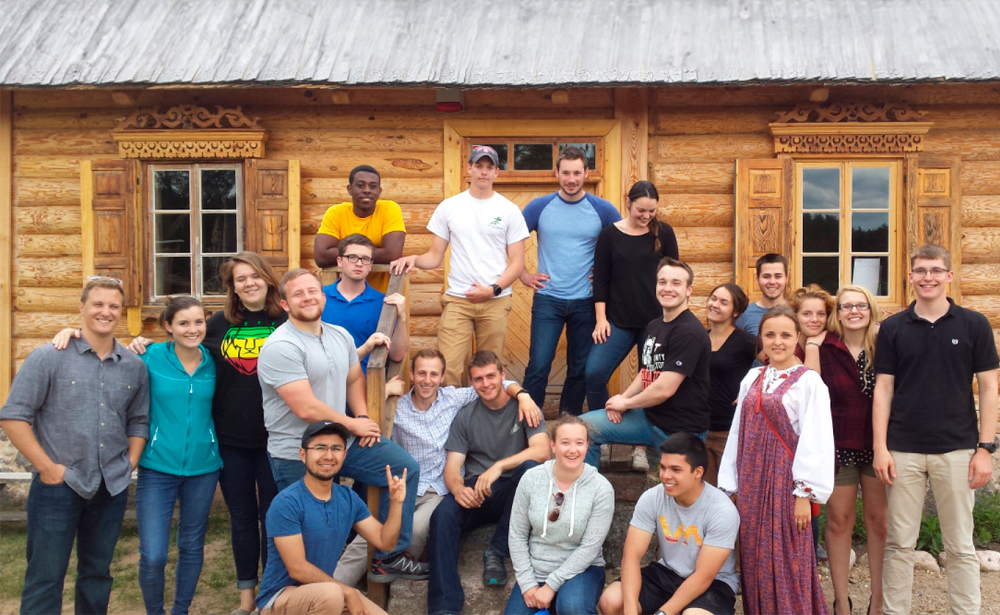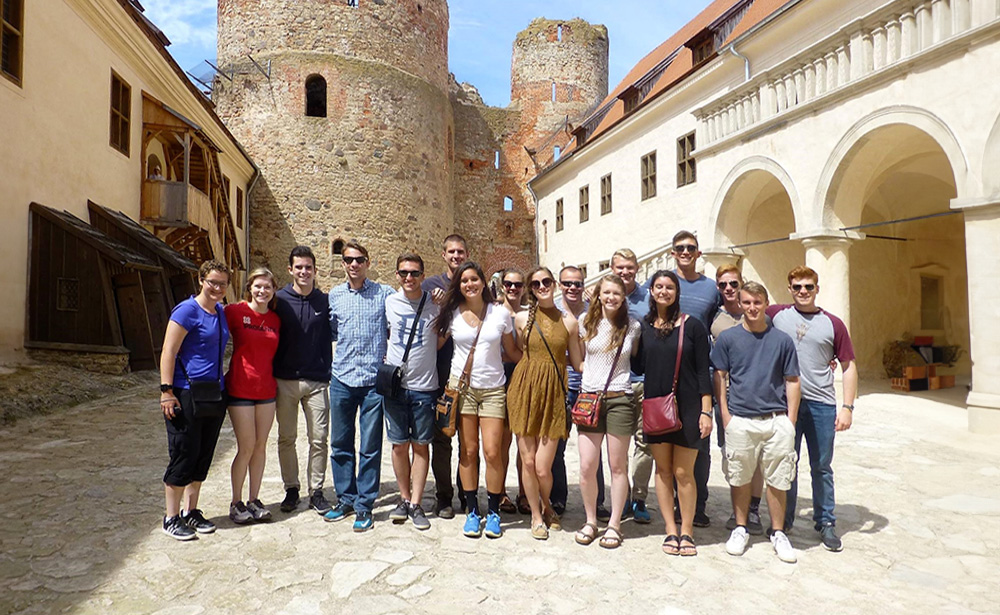Fist fighting in Russia and Its Origin
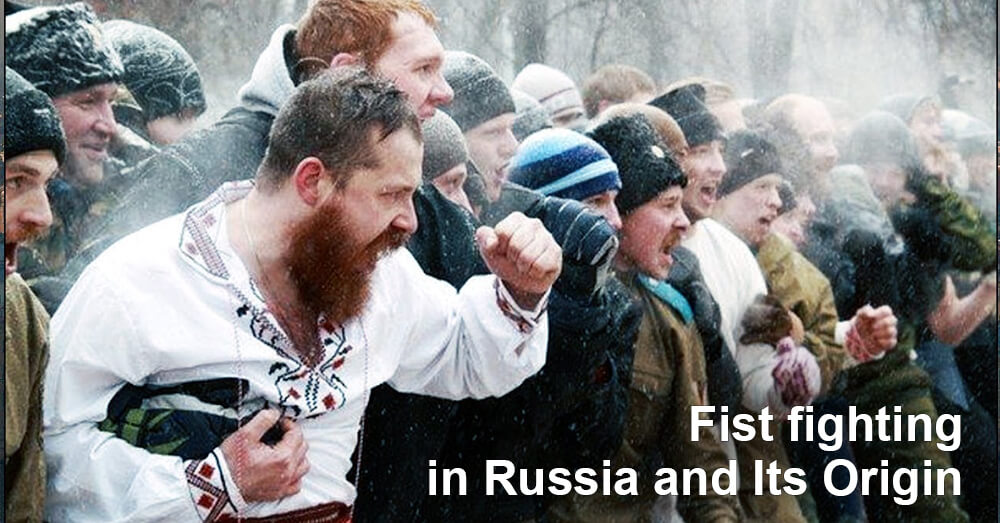
Many cultures considered fist fighting to be a spectacular and popular sport. Traditions of hand-to-hand fighting appeared in Russia long time ago. At that time already, the Slavs proved themselves as strong and brave warriors who were trained in the military art since their childhood. In this article, we’re going to tell you about the fist fighting and its types in Russia.
Main rules
Russian fist fight always had a number of rules and regulations that determined the behavior of a fighter during a fight. For example, it was banned to finish off those who fell to the ground. Attacks from the back and low blows were also not allowed. It was enough to squat if a fighter wanted to give in.
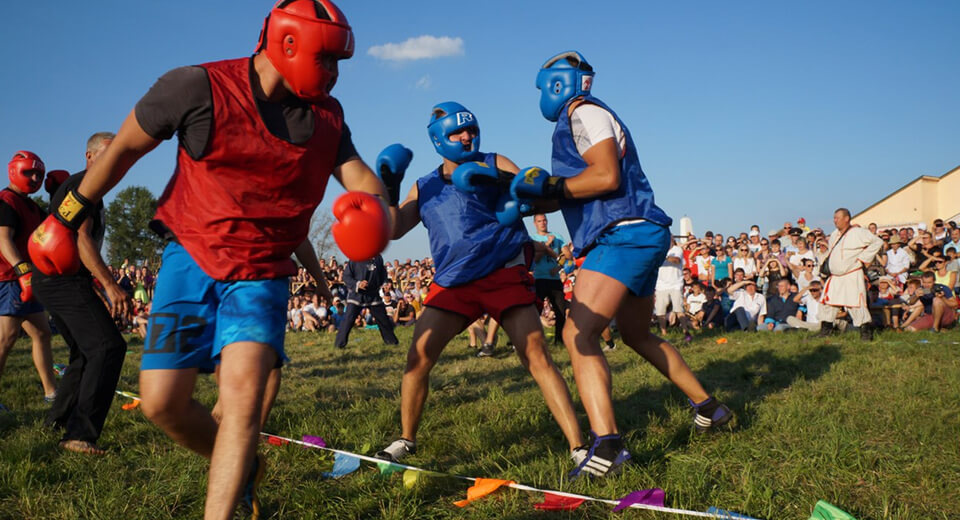
No weapon was allowed during the fight. If a piece of lead was noticed in a glove, the fighter would have faced severe punishment. There were three types of blows: with the knuckles, with the base of a fist, and the heads of the phalanges. Blows during the fighting should be simple, fast, and effective.
Preparation for fighting
Fighters had a very responsible attitude toward the battle, so they were getting ready to it in advance. About a week before the fight, men stopped drinking alcohol, spent more time doing physical work, and in the evening relaxed in the banya. They also changed their diet. It consisted mainly of bread and meat, which allowed the fighter to gain the necessary weight in a short time.
Rituals before fighting
Russian fist fighting is more of a cultural phenomenon. Participants always followed strict rituals of preparation. For example, in Ancient Russia, fighters practiced such a special dance as the “dance of the humpback” or “breaking”. By means of this kind of dancing, fighters tried to imitate a bear’s movements, and in return, they hoped to receive the strength of this animal.
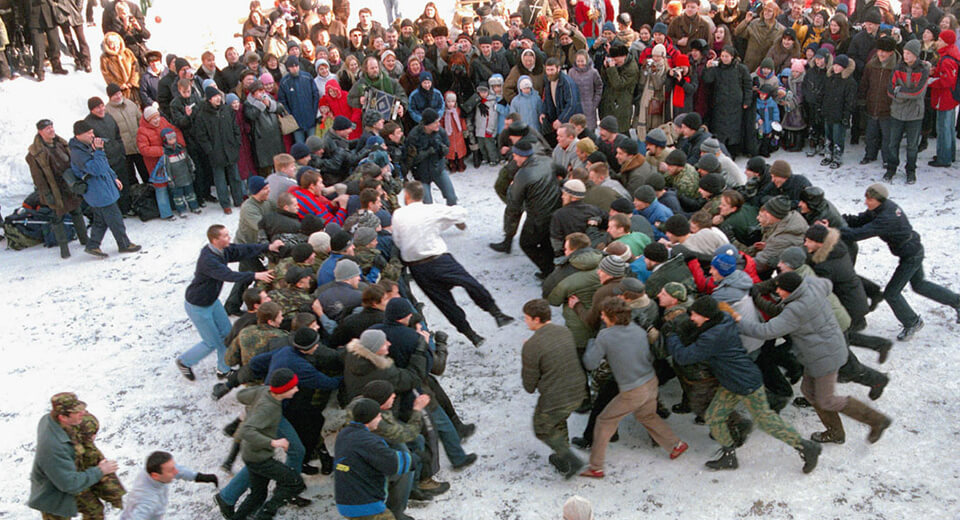
Before the beginning of the fight, participants walked along the streets of the city. They were singing songs, while people tried to provoke them. Finally, fighters arrived at the place of fight where they lined up in a row and shouted bad words at their rivals and showed them obscene gestures. The fight began when one of the participants shouted: “Give a fight!”.
Types of fist fighting
Wall-to-wall
Wall-to-wall fist fight is both the most common type of fist fighting and an old Russian entertainment which followed strict rules. Two lines of rivals were fighting with each other. Men aged from 16 to 60 could participate in the fight; a number of participants could be from 10 to up to a few hundred people. These fights were mainly held during Maslenitsa.
One-to-one
Individual fights were considered to be the most respected, as personal qualities of each fighter were revealed in them. These fights were mainly used to prove the defendant’s case in court. During the fight, it was prohibited to finish off the opponent. The one who fell down lost the fight.

Stseplyalka-svalka
Stseplyalka-svalka is the oldest types of fist fighting. Its main difference from other types was that the fighter went out on a fist fight in the crowd, himself choosing an opponent. It looked like a chaotic fight between a large number of people.
Ban on fist fighting
Immediately after the Christianization of Kievan Rus first bans on fist fighting began, as Slavic pagans dedicated their fights to Perun, who was the patron of warriors and martial arts. Christians of course didn’t encourage this tradition, and in 1274 Metropolitan Cyril decided to place under the ban the men participating in the fist fights. Despite this ban, fist fighting was not forgotten. In the 17th century Peter the Great encouraged fist fighting and even participated in the fight himself. However, when Nicholas I became Tsar, fist fighting was abolished.
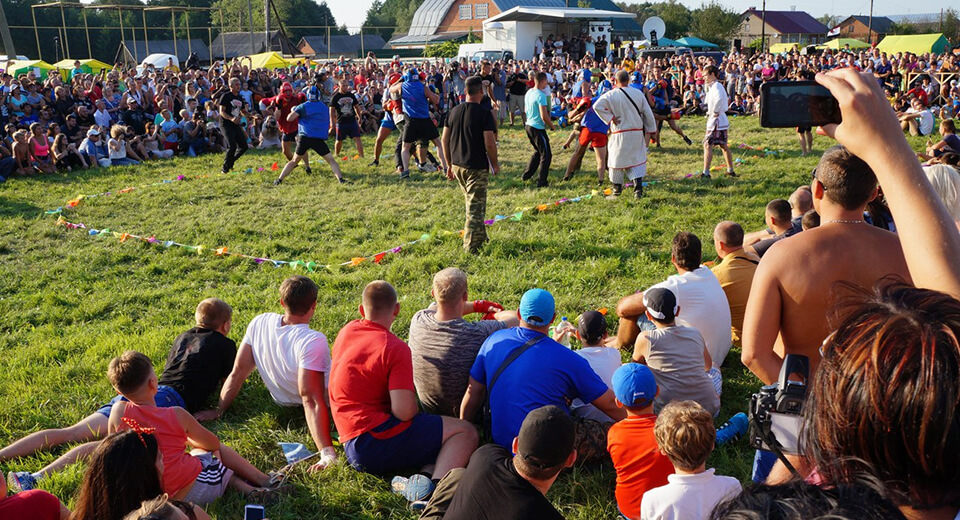
You may be interested
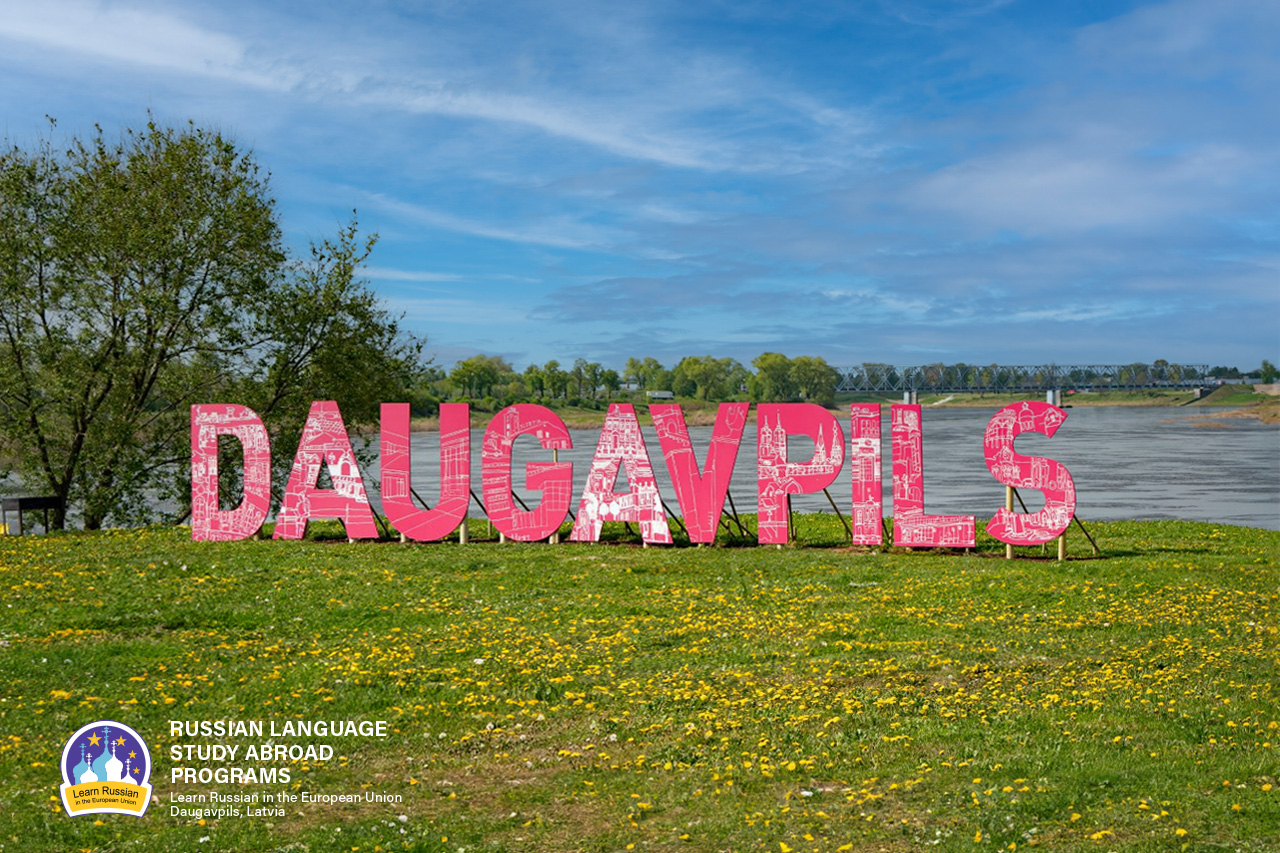
Why do people speak Russian in Daugavpils?
As it seems to us, Daugavpils is the best place to learn Russian now, because our city is situated in the EU and NATO, but at the same time 90% of the city’s population speak Russian at home.

ЭТЮД О ДВИНСКЕ
Etude on Dvinsk by F.Fedorov
The Baltic region is one of the most catastrophe prone regions of the 2nd millennium, especially its second part; it is the centre of attraction of ‘geopolitical’ interests of the European world. Probably the most tragic fate has befallen to the eastern part of the present Latvia and its multi-titled town of Dinaburg – Dvinsk – Daugavpils. During its 730 years long history, the town went through five rather autonomous periods of development, five different lives (German, Polish, Russian, Latvian, Soviet), and at the beginning of the 1990s it entered into the 6th period.
The history of Dinaburg – Dvinsk – Daugavpils is the history of five attempts by the town to begin its life anew; and this is determined not only by the fact that the town was four times burned down and had to start life from scratch, but first and foremost because each of these periods was characterized by a total change of ethnos and the socio-cultural field.
The present article deals with the cultural space of the town in one of the most efficient periods of its development – from the 1860s till World War I.






